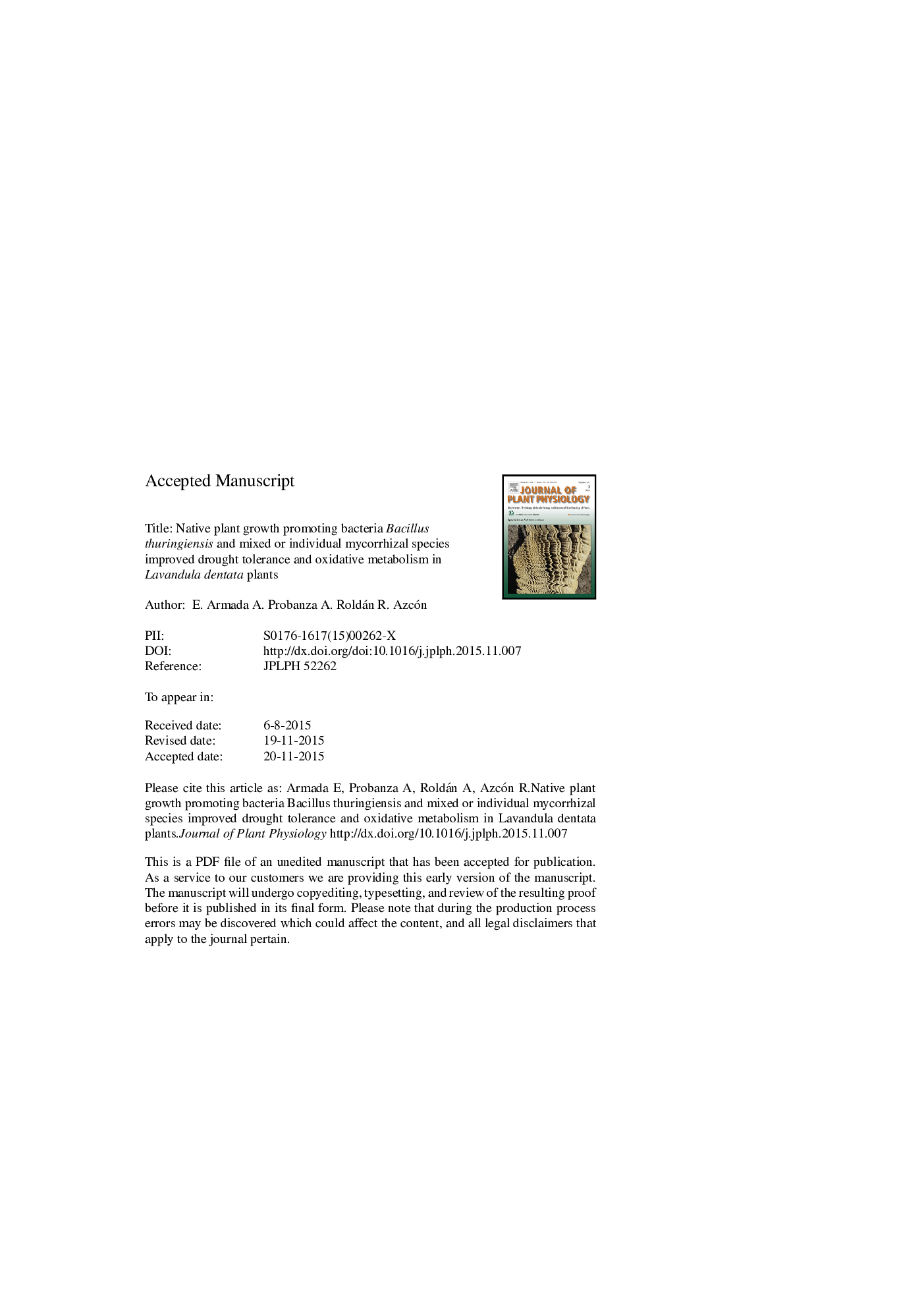| Article ID | Journal | Published Year | Pages | File Type |
|---|---|---|---|---|
| 8387234 | Journal of Plant Physiology | 2016 | 36 Pages |
Abstract
This study evaluates the responses of Lavandula dentata under drought conditions to the inoculation with single autochthonous arbuscular mycorrhizal (AM) fungus (five fungal strains) or with their mixture and the effects of these inocula with a native Bacillus thuringiensis (endophytic bacteria). These microorganisms were drought tolerant and in general, increased plant growth and nutrition. Particularly, the AM fungal mixture and B. thuringiensis maximized plant biomass and compensated drought stress as values of antioxidant activities [superoxide dismutase (SOD), catalase (CAT) and ascorbate peroxidase APX)] shown. The AMF-bacteria interactions highly reduced the plant oxidative damage of lipids [malondialdehyde (MDA)] and increased the mycorrhizal development (mainly arbuscular formation representative of symbiotic functionality). These microbial interactions explain the highest potential of dually inoculated plants to tolerate drought stress. B. thuringiensis “in vitro” under osmotic stress does not reduce its PGPB (plant growth promoting bacteria) abilities as indole acetic acid (IAA) and ACC deaminase production and phosphate solubilization indicating its capacity to improve plant growth under stress conditions. Each one of the autochthonous fungal strains maintained their particular interaction with B. thuringiensis reflecting the diversity, intrinsic abilities and inherent compatibility of these microorganisms. In general, autochthonous AM fungal species and particularly their mixture with B. thuringiensis demonstrated their potential for protecting plants against drought and helping plants to thrive in semiarid ecosystems.
Related Topics
Life Sciences
Agricultural and Biological Sciences
Agronomy and Crop Science
Authors
E. Armada, A. Probanza, A. Roldán, R. Azcón,
